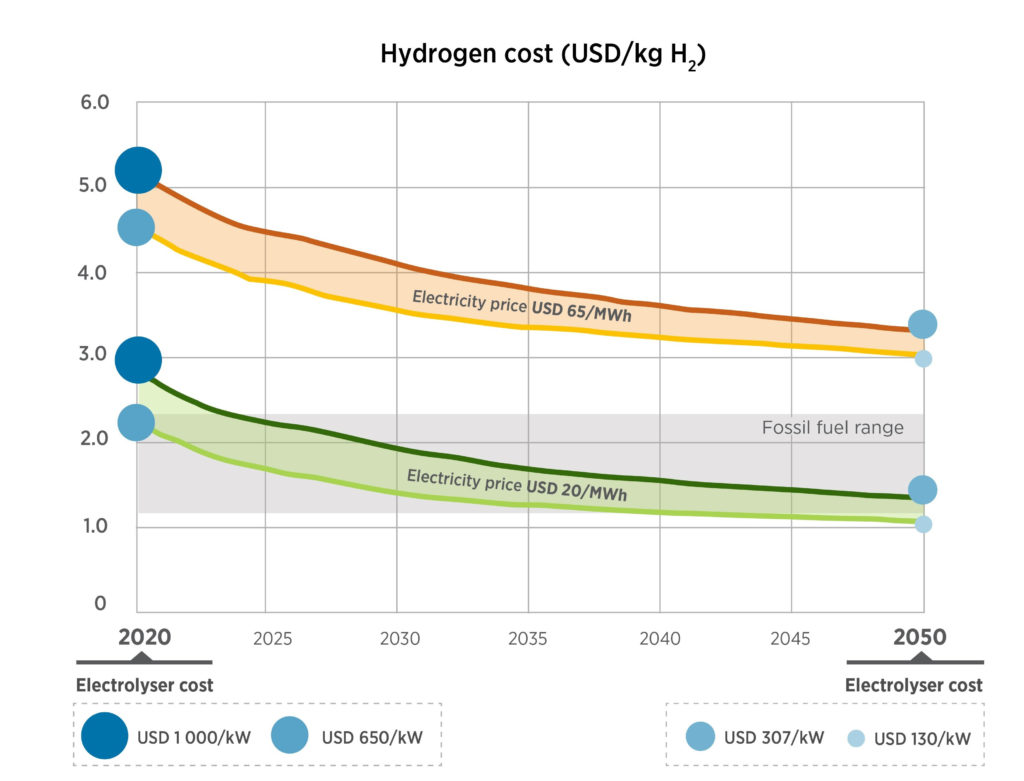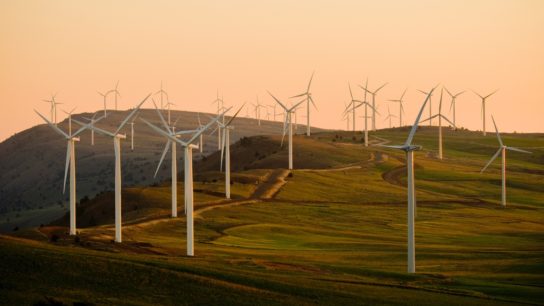A new report by the International Renewable Energy Agency (IRENA) says that green hydrogen, produced with renewable electricity, could compete on costs with fossil fuel alternatives by 2030, driven by falling costs for solar and wind power, improved performance as well as scaling electrolysers, making it a viable solution to fight climate change. The report also looks at drivers for innovation and presents strategies for governments to reduce the cost of electrolytes by 40% and 80% in the short- and long-term respectively.
—
What is Happening?
- Green hydrogen could play a vital role in decarbonisation strategies, particularly in industries whose emissions are difficult to abate, such as steel, chemicals, long-haul transport, shipping and aviation. However, there are still major barriers to the uptake of green hydrogen, such as market design and regulations and the costs of power and electrolyser production.
- Currently, green hydrogen is two to three times more expensive than blue hydrogen and is produced from fossil fuels in combination with carbon capture and storage (CCS). However, the production costs for green hydrogen is determined by the renewable electricity price, the investment cost of the electrolyser and its operating hours. Renewable energy is already the cheapest source of power in many parts of the world but while low-cost electricity is a necessary condition for competitive green hydrogen, investment costs for electrolysis facilities must fall significantly too.
- The study by IRENA identifies key strategies and policies to reduce costs for electrolysers through innovation and improved performance aiming to scale up electrolysers from today’s megawatt to multi-gigawatt (GW) levels. However, standardisation and mass-manufacturing of the electrolyser stacks, efficiency in operation as well as the optimisation of material procurement and supply chains is equally important to bring down costs. For that to happen, today’s manufacturing capacity of less than 1 GW would have to grow beyond 100 GW in the next 10 to 15 years.
- According to IRENA, In the best-case scenario, using low-cost renewable electricity at USD$20/MWh in large, cost-competitive electrolyser facilities could produce green hydrogen at a competitive cost with blue hydrogen already today. If rapid scale-up and aggressive electrolysers deployment take place in the next decade, green hydrogen could then start competing on costs with blue hydrogen by 2030 in many countries, making it a cheaper solution than other low-carbon alternatives before 2040.
You might also like: What is Green Hydrogen?

A graph detailing the falling costs of green hydrogen (Source: IRENA).
Francesco La Camera, Director-General of IRENA, says, “Renewable hydrogen can be a game-changer in global efforts to decarbonise our economies. Levelling the playing field to close the cost gap between fossil fuels and green hydrogen is necessary. Cost-competitive green hydrogen can help us build a resilient energy system that thrives on modern technologies and embraces innovative solutions fit for the 21st century.”

















